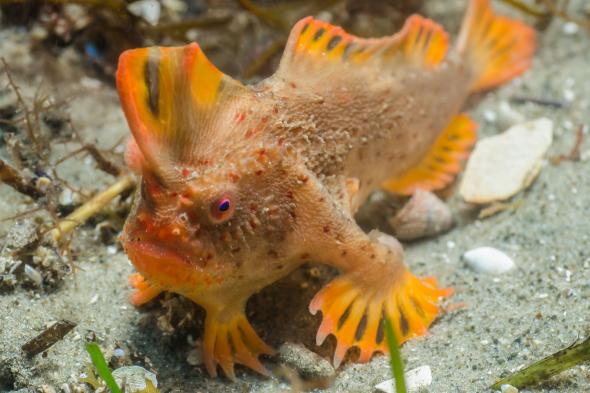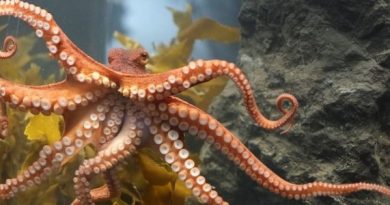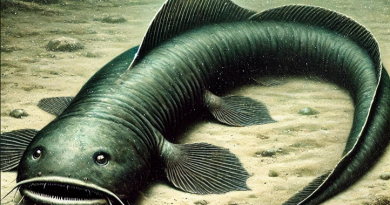Fish With ‘Hands’ caught Red-Handed
Antonia Cooper and her research team had been diving for two hours. Hailing from the University of Tasmania’s Institute of Marine and Antarctic Studies and the citizen science program Reef Life Survey, the group had received a tip from the public that a rare species of fish had been spotted near a reef miles off Tasmania’s south-east coast, and the divers wanted to find it.
But with more than half of their three-and-a-half-hour search already over, the team hadn’t found the fish. Cooper was ready to call it a day and gestured for her diving partner to call off the rest of the group. Before heading back in, she was half-heartedly fiddling with a stray piece of algae when she spotted something red in the water.
“Lo and behold, I found a red handfish,” Cooper says in a video. “That was very exciting.”
Named for their hand-shaped fins, red handfish are benthic ocean dwellers that crawl on the seafloor with their limbs. They grow to be between two and five inches long, and they eat small crustaceans and worms. Red handfish actually come in two color variations—one a bright red and the other marked by red embellishments.
The species is easily one of the rarest fish in the world, says University of Tasmania research fellow Rick Stuart-Smith. The elusive fish were first spotted near Port Arthur on the Tasman Peninsula in the 1800s. Until now, a group of only 20 to 40 fish were known to be living on a stretch of reef near Hobart’s Frederick Henry Bay.
Cooper’s new find may double the known population of red handfish to an optimistic 80 individuals. There could still be other undiscovered populations out there, Stuart-Smith says.
“We’ve already learned a lot from finding this second population because their habitat isn’t identical to that of the first population,” Stuart-Smith says in a statement. “So we can take some heart from knowing red handfish are not as critically dependent on that particular set of local conditions.”
Helping Hands
Fourteen known species of handfish are endemic to the waters off south-east Tasmania. The small, colorful, sedentary fish are not built for long-distance swimming, so it’s likely the newly discovered population is genetically different from the Hobart population.
Handfish are critically endangered. They lay their eggs at the base of pieces of seaweed, so it’s easy for those eggs to get jostled or knocked off by swimmers and boats. They’re also threatened by poaching to be used as pets, and their low reproductive and dispersal rates don’t help their dwindling numbers either.
Because they live in small, isolated populations, Stuart-Smith says handfish are sociable within their groups. This means location-based conservation programs might be a good way to revitalize the species.
Spotted handfish are still seen around Hobart, and Australia has instituted a national recovery plan for some threatened species. Another species, Ziebell’s handfish, hasn’t been seen in more than a decade, leading scientists to think it has gone extinct, or are at least very close.
“The only thing that would have been more exciting last week,” Stuart-Smith says, “would have been finding the Ziebell’s and finding out that they’re not extinct.”
Source : National Geographic



